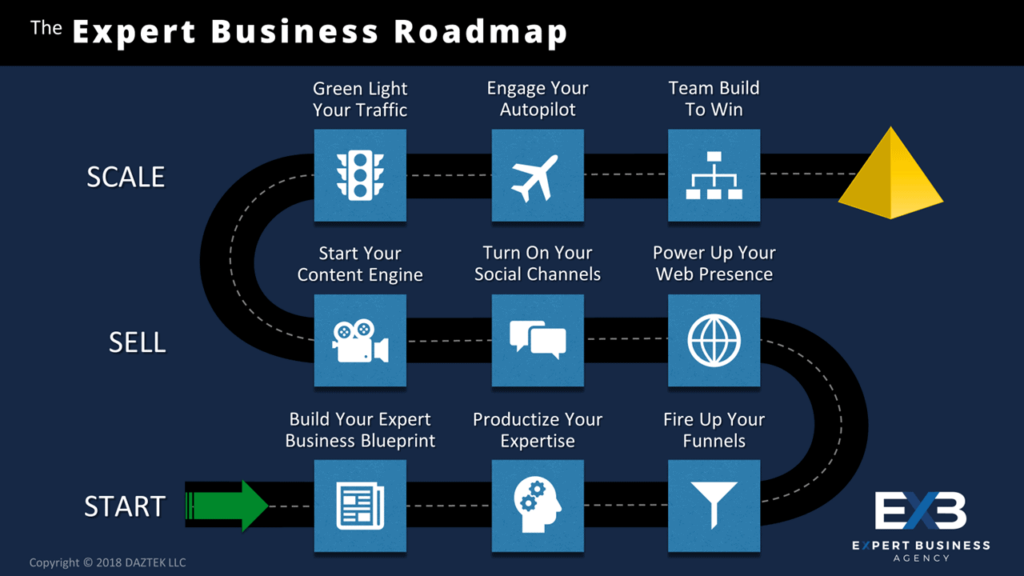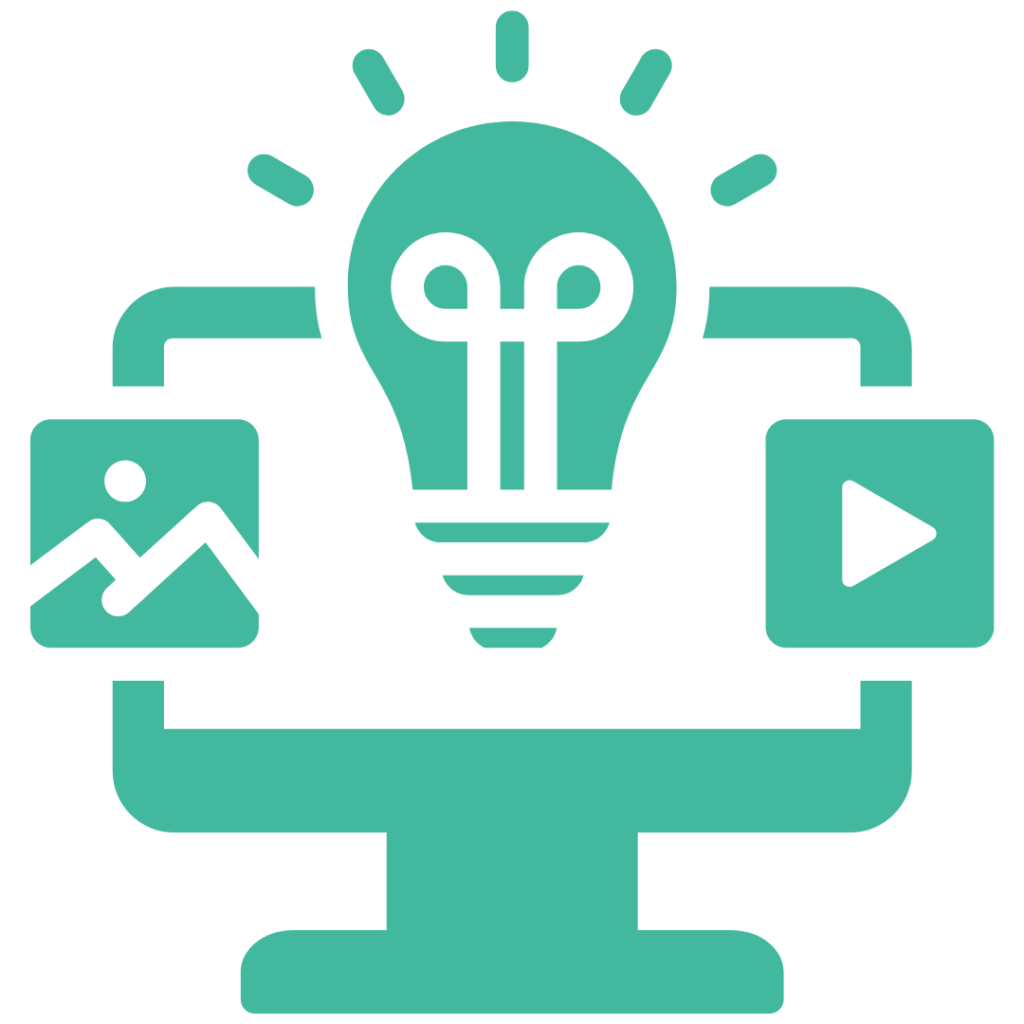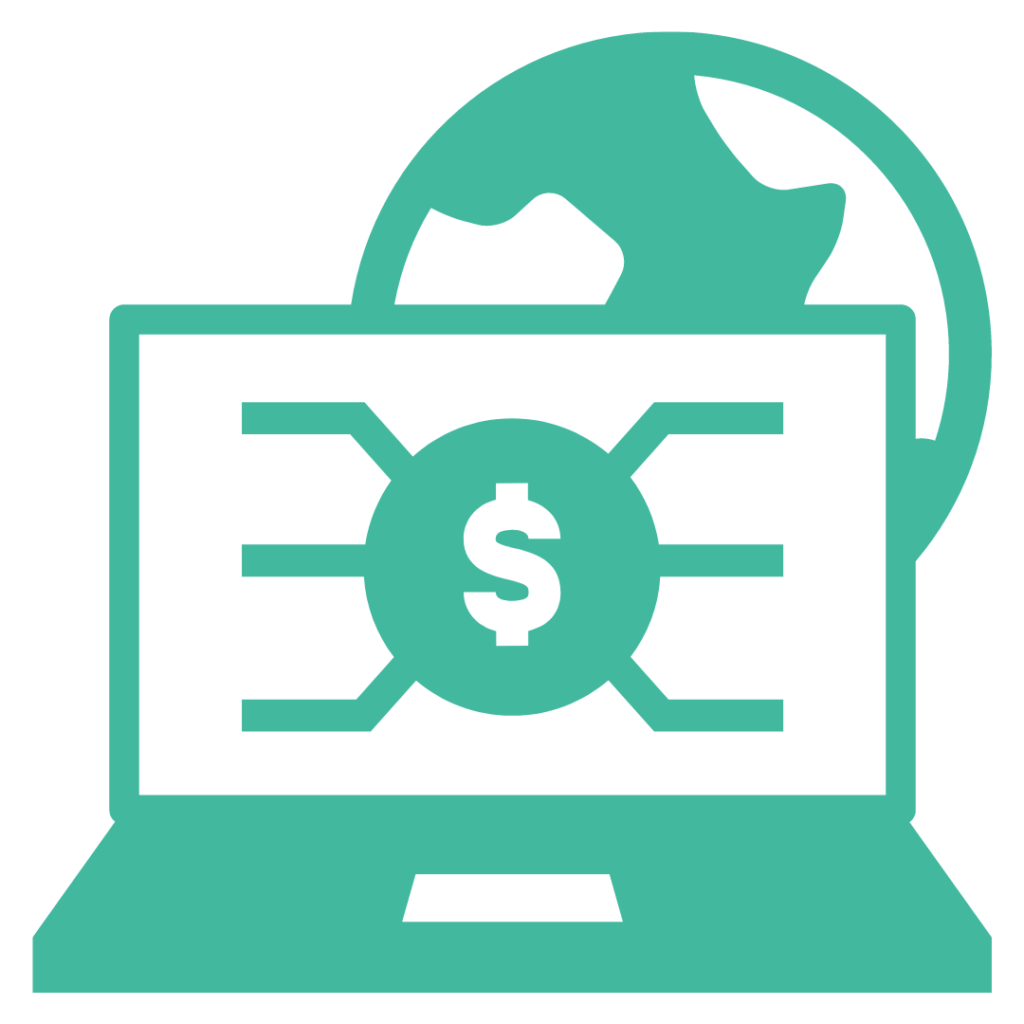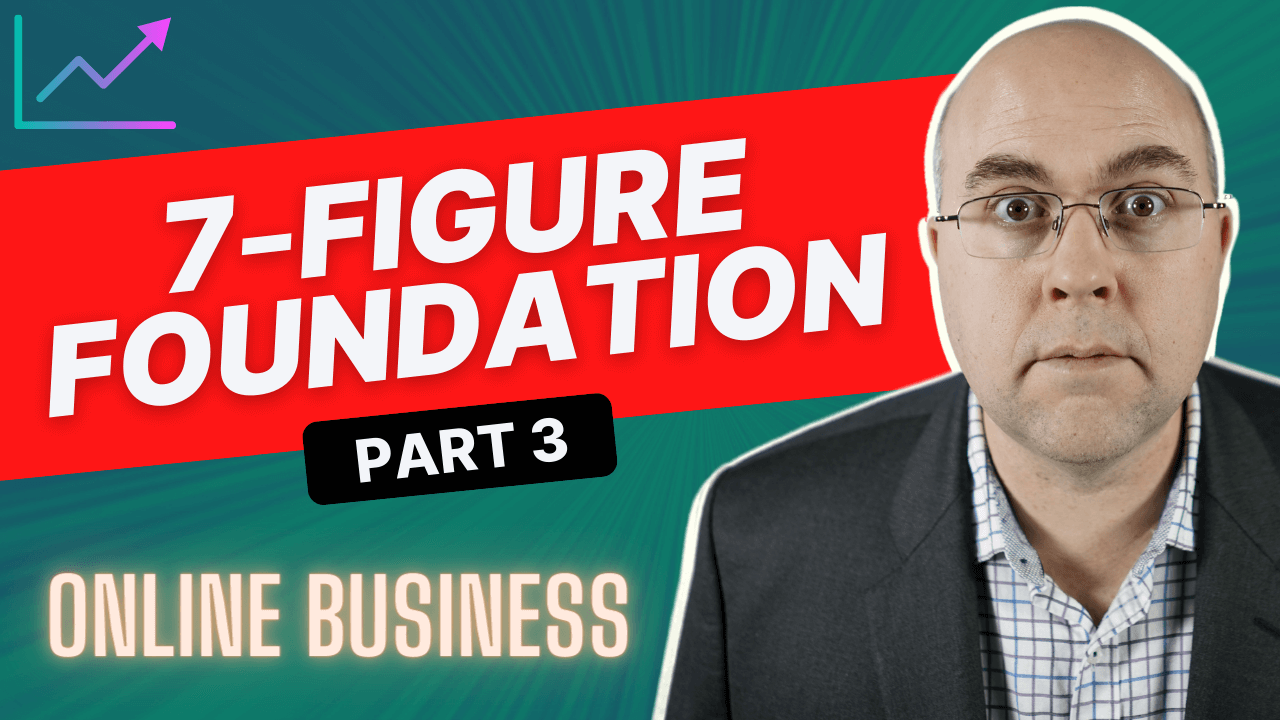Ultimate 7-figure Online Business Foundation (Part 3)
There are nine foundational elements an online business needs to hit seven figures. In Part 1 we covered the first three. In Part 2 we covered the next three. In this post, we’ll cover the final three essential elements: traffic, automation, and team building.
Remember, trying to build a business without a solid foundation is the same as trying to build a skyscraper without one. It’s going to tip over and fail at its weakest point.
Now, be sure to read until the end, I’ll cover a bonus tip on how to get all nine elements up and running in your business quickly. Also, check out this free resource that’ll help you.
In Part 1, we created our Expert Business Blueprint, Productized Our Expertise and Fired Up Our Sales Funnels to pre-sell and validate our offers.
Then in Part 2, we Powered Up Our Web Presence, Turned On Our Social Channels, and Started Our Content Engines to begin attracting an audience and begin converting them into customers.

These are all essential, but to grow to six figures quickly, we need more traffic, and that’s where the next essential element comes in.
Green Light Your Traffic

Green lighting your traffic means beginning to implement paid ads to drive more traffic to your content and sales funnels. The days of just throwing a blog online and Google delivering millions of viewers to you are long gone unless you’re particularly talented on camera.
Organic growth alone is very slow going and most people burn out long before their content ever takes off. Paid traffic helps level the playing field and gives us a chance to accelerate our results. This is also a big reason why I spent so much time talking about pre-selling your programs and generating cash flow as soon as possible.
That revenue can be poured right into ads in paid traffic to begin the flywheel of growth.
Okay, so what does a traffic strategy look like? That can be a very advanced topic, but to keep it simple, we align it to our three priorities:
- Attracting an audience
- Converting them to customers
- Ascsending them to higher level programs
We want to have a traffic strategy that accelerates each of those. We want a traffic strategy that gets more eyes onto all the output from our content engine.
That means awareness and video view type campaigns to get more people seeing the content. Since the content should always have calls to action and your offer should never be more than one click away, just people seeing your content will result in some traffic to your sales funnels.
That number will still be pretty small, which is where the next tier of traffic comes in, which is conversion ads.
You’ll retarget people who have viewed your content. With ads that are more specific and directly highlighting their problems and your solutions. These ads will drive people to your entry level and flagship program sales funnels.
Then for as sending people into your higher ticket programs, a combination of ads and email marketing would be used to generate awareness and leads into your high ticket funnel.
Think about your traffic strategy as a funnel of funnels. You want to bring more people into the top of the funnel with your awareness campaigns.
You want to convert more of them to customers with your conversion ads and then you want to ascend more of them to higher level customers with your ascension and high ticket campaigns.
As you generate more revenue through that cycle, you pour as much of that back into ads as you can. But with seven of the foundational elements in place, you now have a lot of moving parts in your business and are probably nearing overwhelm, just trying to keep up with content creation, building your program, and work in all seven of those areas.
But keep reading because the next two elements are coming to the rescue to help.
Engage Your Autopilot

The answer to overwhelm is automation and delegation. To get to as streamlined a business as possible, you wanna automate everything that can be automated and delegate everything that can be. The best way to start identifying areas that may be able to be automated is to do a time in motion study for a week. What that means is, as you go through a typical week, keep a simple journal of the task you did and how long they took.
Also, note the tasks you wanted to do but didn’t get to. For each task you write down also note which of the foundational elements the tasks align to. If you’re working on a video script for YouTube, that would align to your content engine element. If you’re working on ad copy that would align to green lighting your.
Once you track tasks in time for a week, go back and look at the data.
You’ll see which element you were spending the most time in. You’ll likely see that there were several areas you weren’t able to get to at all. Then if you imagine a relatively similar schedule for the next six months, you’ll start to see how much work is repetitive and how much time it takes, and so on.
The biggest ROI from automation is repetitive and time consuming tasks. For your time in motion study, you should see those. Clearly many of those are found in your content engine area. Content repurposing, social media, scheduling and posting are great candidates for automation with a large ecosystem of tools to help.
Your email service provider CRM will also have tons of automation capabilities around messaging campaigns, follow up sequences, and more. Then there are general purpose automation platforms like Zapier, Make, and Pabbly.
With our clients, we use a range of enterprise grade tools to automate as much as possible for solopreneurs.
In some areas like content, you’ll find large portions that can be automated. In other areas, it may only be portions or even just one task out of 10. That’s okay. Every minute saved is time you can shift to higher priority activities.
If you aren’t particularly technical, automation may feel a bit over your head. That’s okay too. Our next and final element is the ultimate answer to both getting things automated and getting things delegated.
Team Build To Win

The final foundation element for a six figure online business capable of growing to seven figures is building or sharing a team to support and accelerate your business. You don’t typically see them, but all the successful online entrepreneurs you see and follow have sizable teams.
Why? Two reasons. First, there’s an incredibly wide range of skills now required for success. There’s tech and content and products and emails, funnels, ads, social media, and on and on. Each of those can be an entire career for someone.
No one person can cover all those areas well, and even if there was, it takes far more time than any one person. Building a team or leveraging a fractional team is the answer for getting more skills and time applied to your business. This does not mean hiring a general virtual assistant, which is old advice that a lot of people still try to follow.
It does mean gaining access to specialists in each of the key areas like tech, content, social and marketing, and so on. In my agency’s program, this is the core value. We provide fractional teams for online entrepreneurs. You need access to specialists in all the areas mentioned but you don’t need access to them full-time.
A 10-person staff of qualified resources could easily be a payroll of $500,000 to one million dollars a year. Instead, in the first one to two years of business, you could leverage a fractional team like I provide and get access to all those skills for less than the cost of one full-time employee. However you get there, establishing a team as early as possible is critical to the success of your online.
Bootstrapping, DIY and doing everything solo just doesn’t work anymore. In the time it would take you to do all that, 10 or more competitors are going to beat you to your audience and market.
Speed of execution is critical today, and that requires a team. A team is what enables you to accomplish our original three functions that all online businesses need for success.
Attracting an audience, converting them to customers, then is sending them to higher level offers. The only way you can do all three quickly at scale is with a team.
Here’s the bonus tip that I mentioned earlier. There is a way to get this entire expert business foundation built within a few months with the help of one of my fractional teams. There are also some nuances and key learnings about fractional teams that you’ll want to look at immediately.
Next Steps:
I’ve put together a free private training on our 3-part framework for building an automated online business using fractional teams. Apply for the free training here!

